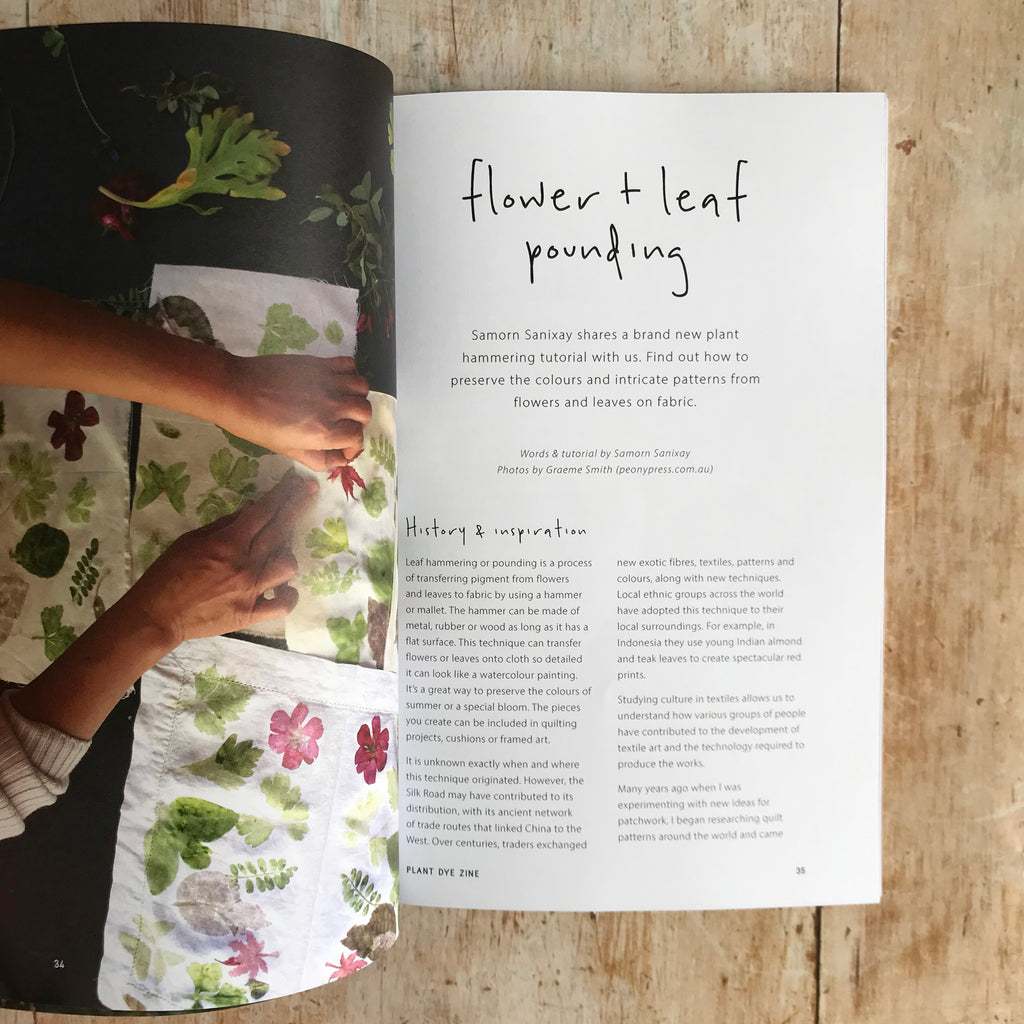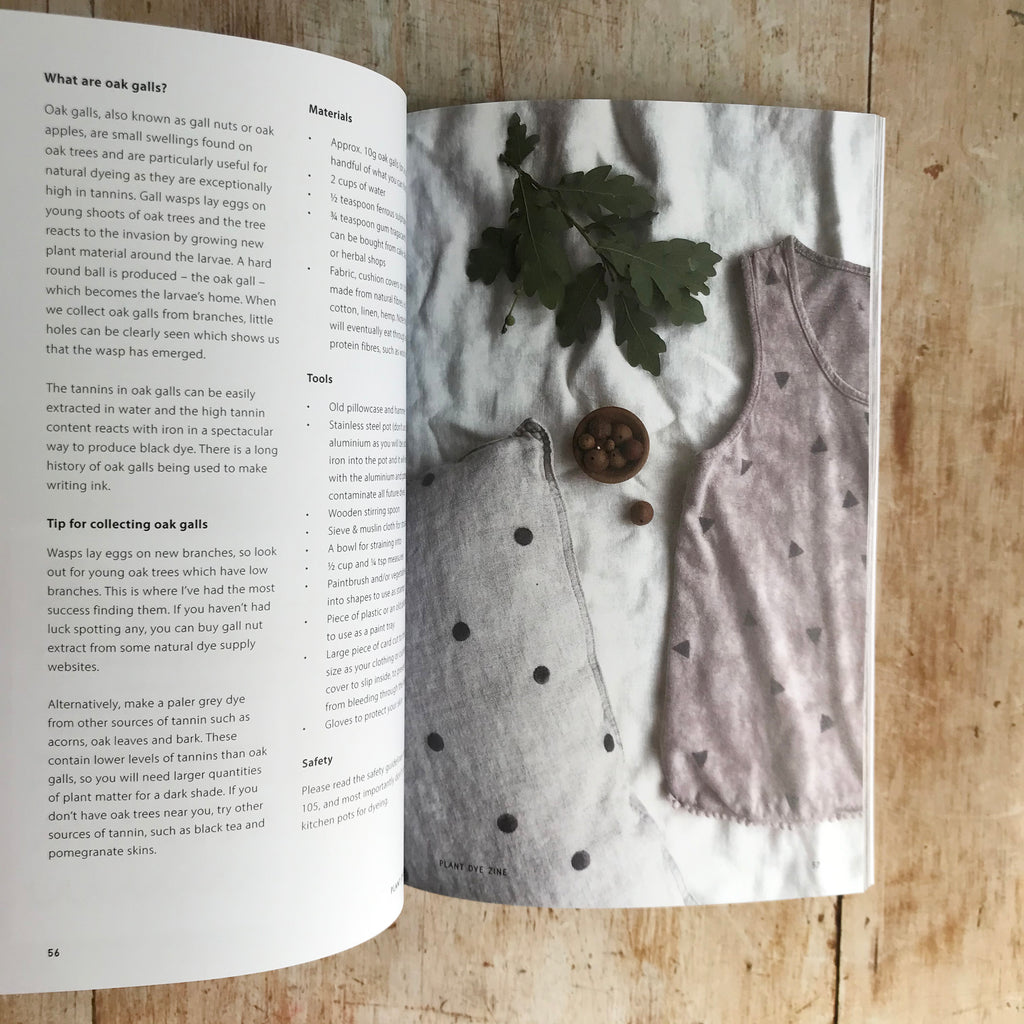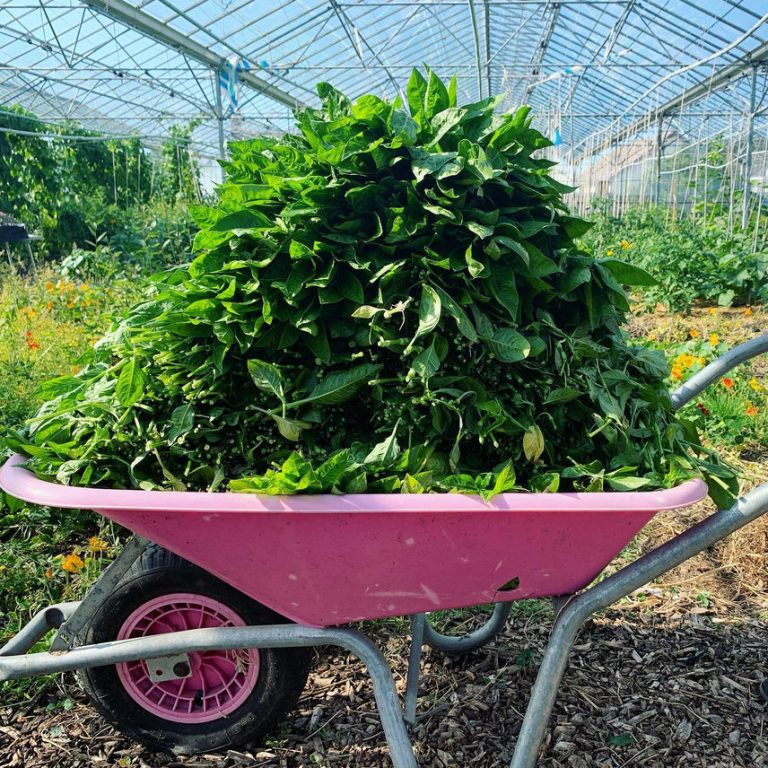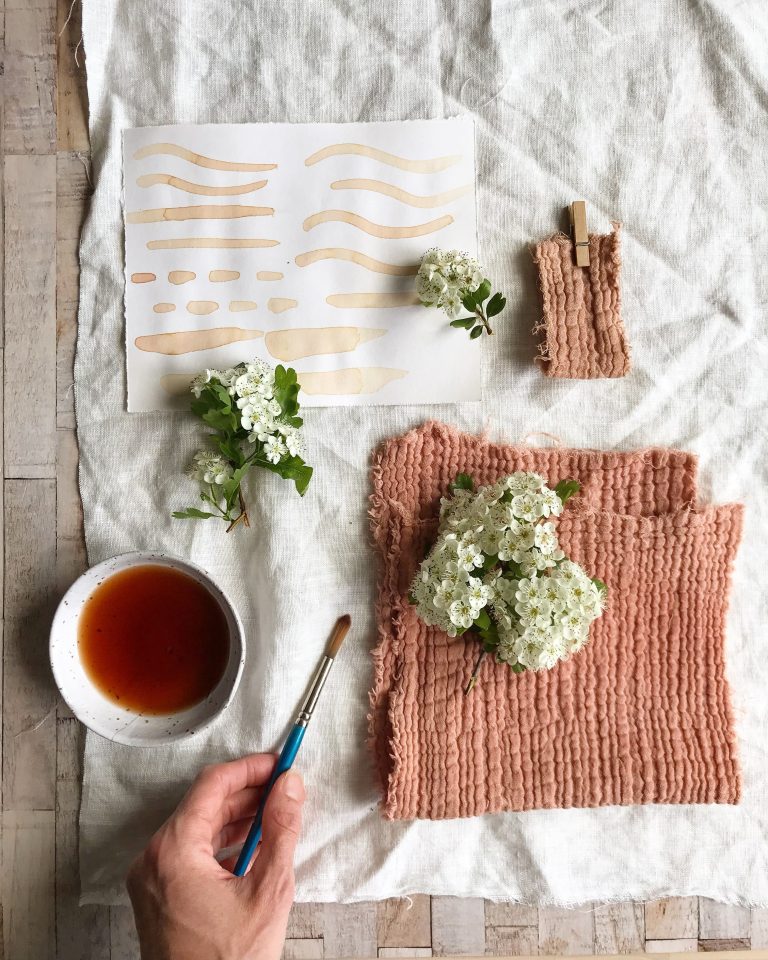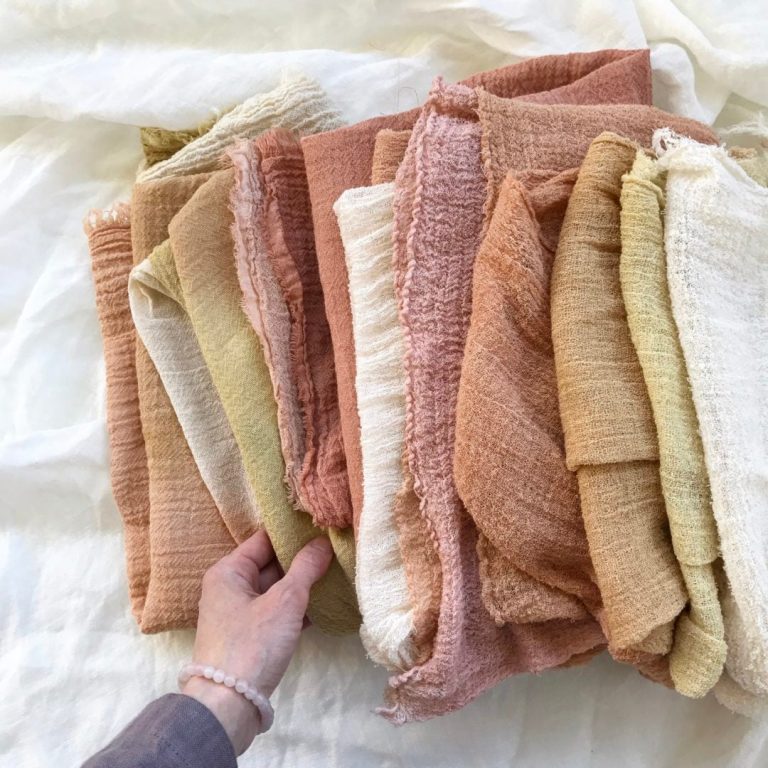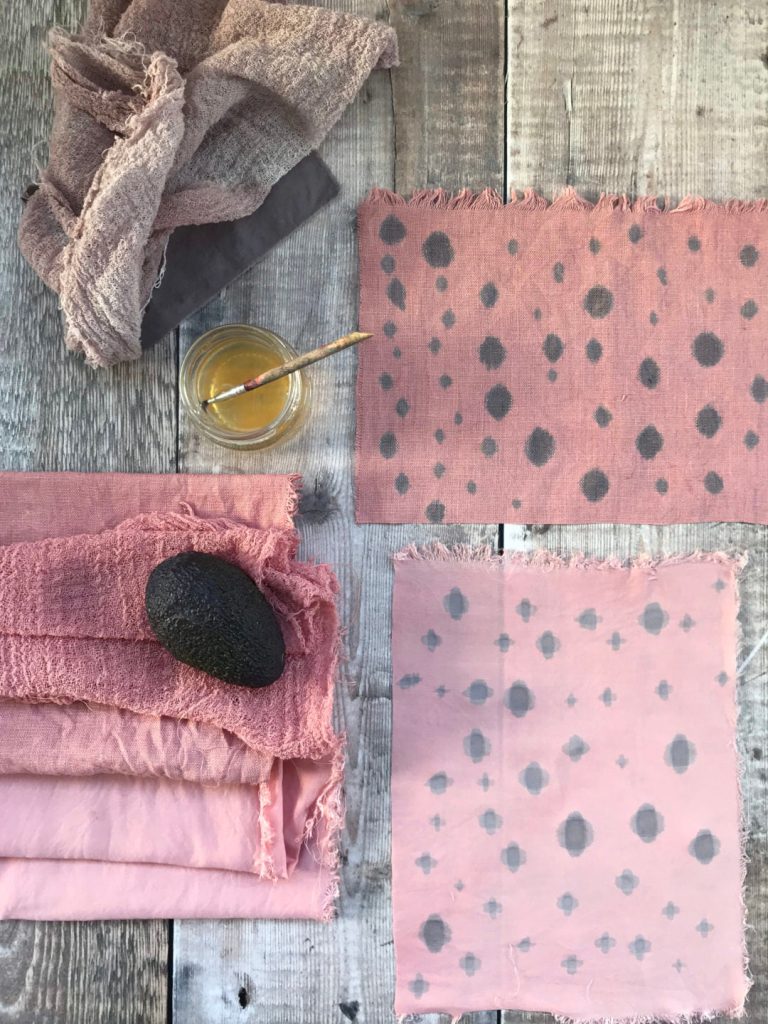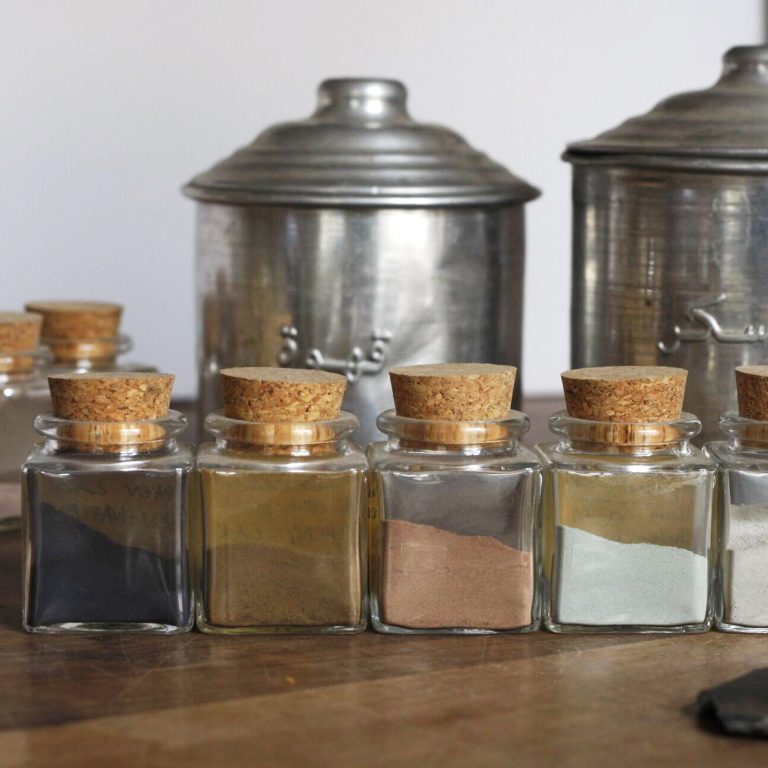What’s the best way to wash clothing that you’ve dyed with plants? Do we need to use special washing detergent? Will the colour last? I receive these questions every week, so I’m sharing my tips here with you.
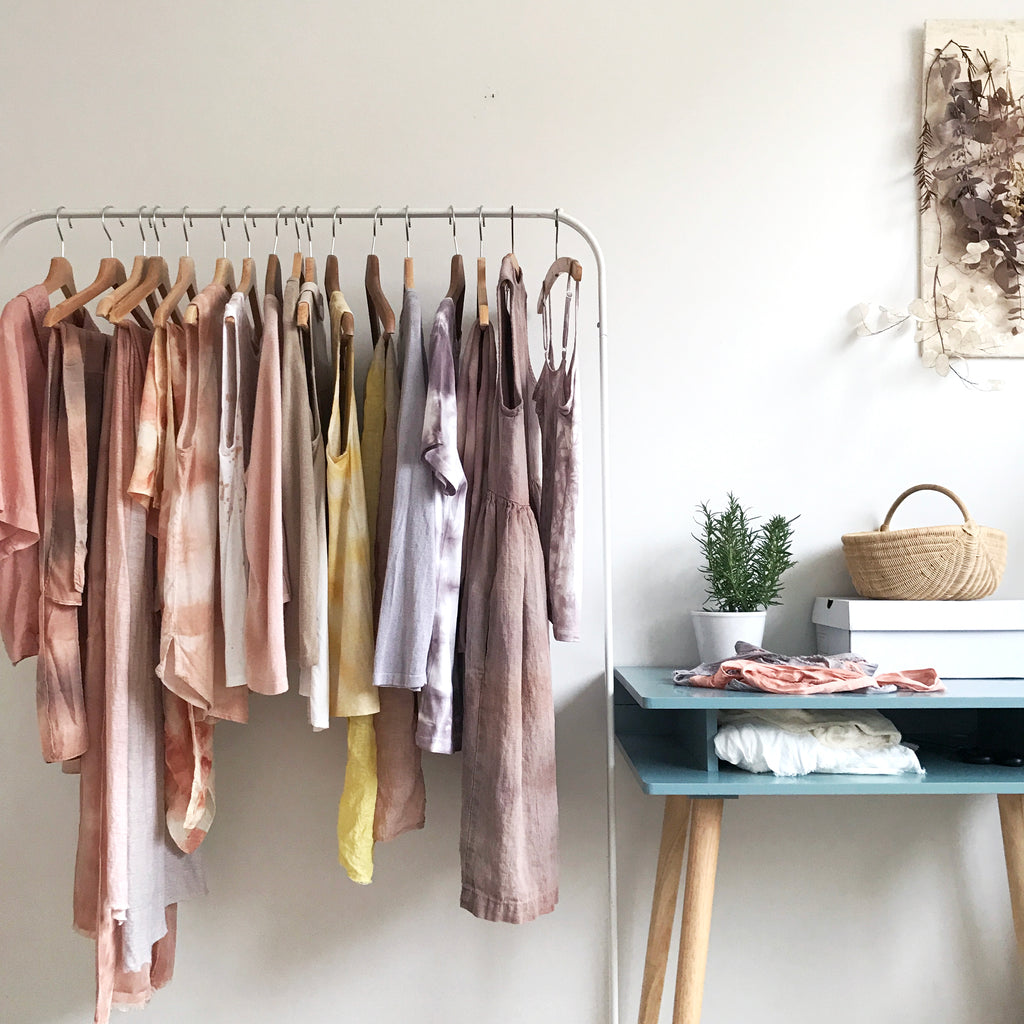
First of all, I’m going to let you into a little secret: I’m not actually that careful with my naturally dyed clothing. I often throw everything into the washing machine in one go and the colours last fine!
The key to long-lasting colours involves:
- how you prepare your fabric before dyeing
- choosing the best plants to give long-lasting colours
- your dyeing technique
Throughout this blog post I only refer to plant fibres such as cotton, linen and bamboo. That’s because I only work with plant fibres, never animal fibres. All the methods in my book Botanical Colour at your Fingertips are vegan.
Everything I write about natural dyeing is based on my own experience. There are so many factors involved in natural dyeing, so you may experience something different to me. Each question and answer is more of a discussion point where I tell you what I have discovered through my own experimentation.
If you email me with more questions, I’ll happily update the blog post in the future.
1. Which plants wash out quickly and are not recommended?
There are some plants that will never dye fabric, no matter which mordant we choose to use or how well we try to dye the fibres. Turmeric, red cabbage and beetroot are examples of plants that are stains, not dyes. These stains will wash out of fabric after a few washes – some more quickly than others.
Years ago, I feared staining tea towels and clothing with beetroot juice, but in actual fact the colour washes out easily. At worst, a light grey mark is left for a short while until all trace of the colour vanishes. Beetroot juice even fades in the dark!
The colour from turmeric doesn’t survive on fabric either, but I do have a fondness for this medicinal plant, as its therapeutic properties may transfer into the cloth and benefit the wearer of the clothing. Does the idea of wearing anti-inflammatory clothing appeal to you? Fabric needs to be repeatedly dyed with turmeric to top up the colour. I like to think of this as more of a fabric conditioning treatment that adds this healing layer onto the cloth. It will wear off through washing, so needs to be topped up.
2. Which are the most colourfast plants?
One of the first ideas that I introduce in my book Botanical Colour at your Fingertips is that tannins play an important role in plant dyeing. Tannins are natural mordants and help dyes attach to fibres, which means the colour is more likely to stand the test of time through repeated washing. Some of my favourites that I explore in my book include oak leaves, acorns, black tea, pomegranate skins and different types of tree cones, such as alder and redwood.
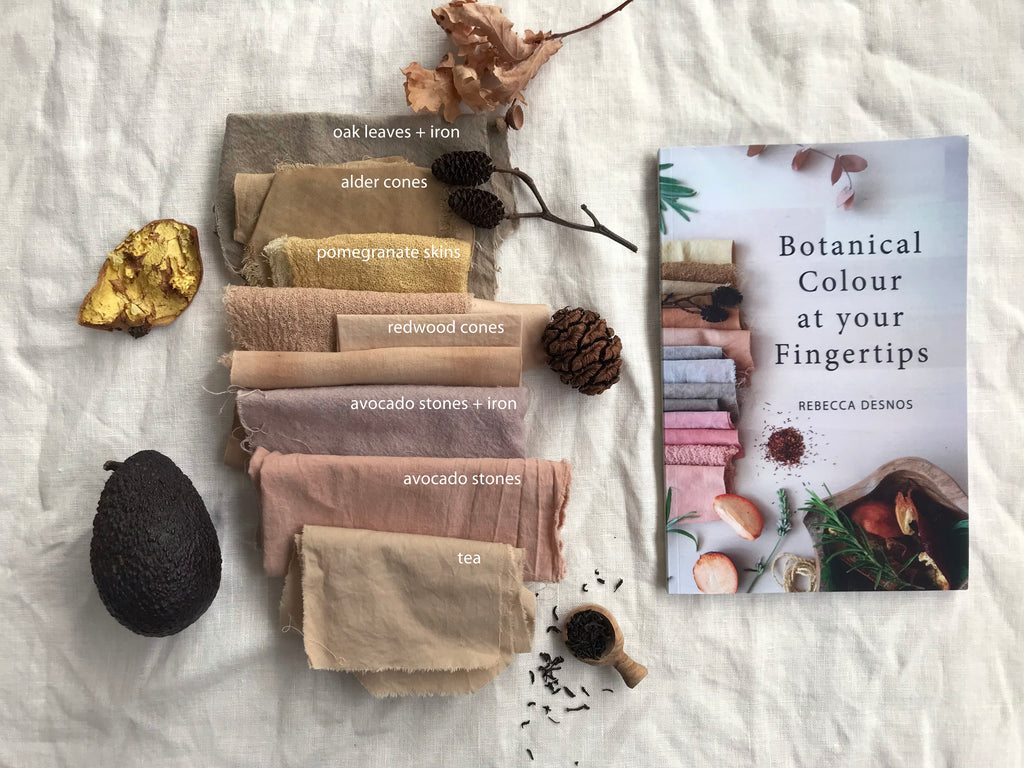
Avocado skins and stones also contain tannins. The bright pink tinge often fades gradually over time and leaves a more muted peachy tone. However, my avocado pink clothing is still much more pinky-peach than beige, so don’t let this deter you. Click here for more tips on avocado dyeing >>>
If you would like your colours to survive repeated washing (don’t we all?), then choose your plants carefully.
3. Can you dye with black tea or will it wash out?
Yes, tea leaves contain tannins and make a wonderful dye! Tea will dye cellulose fibres (such as cotton and linen) without any mordant or pretreatment, but only to a pale shade. I like to pretreat all of my fabric in diluted soya milk (find the method in Botanical Colour at your Fingertips) and this helps us achieve much deeper shades on cellulose fabric.
Tea dyeing is the perfect introduction to botanical dyeing as almost everyone has some tea bags or loose tea in the kitchen. Since it’s an edible dye, this is the one time that I use my kitchen saucepans for dyeing. I’ve written a blog post on dyeing with tea and I show you how to paint patterns with milk beforehand. It’s a really simple and fun trick!
4. Do you use the washing machine or hand wash?
I rarely hand wash anything – everything gets thrown into the washing machine on a 30° cycle. I wash all clothing at this temperature, except for underwear and soiled children’s clothing as those items need a higher temperature to kill bacteria.
In an ideal world, I’d group together all of my plant-dyed clothing and wash together. However, I don’t want to wait for several items to get dirty, so I wash all my family’s clothing together. I recommend keeping bright colours, lights and darks separate, because synthetic dyes can rinse out of fabric and tint your delicate plant hues. I wash my plant dyed clothes with other pale coloured items.
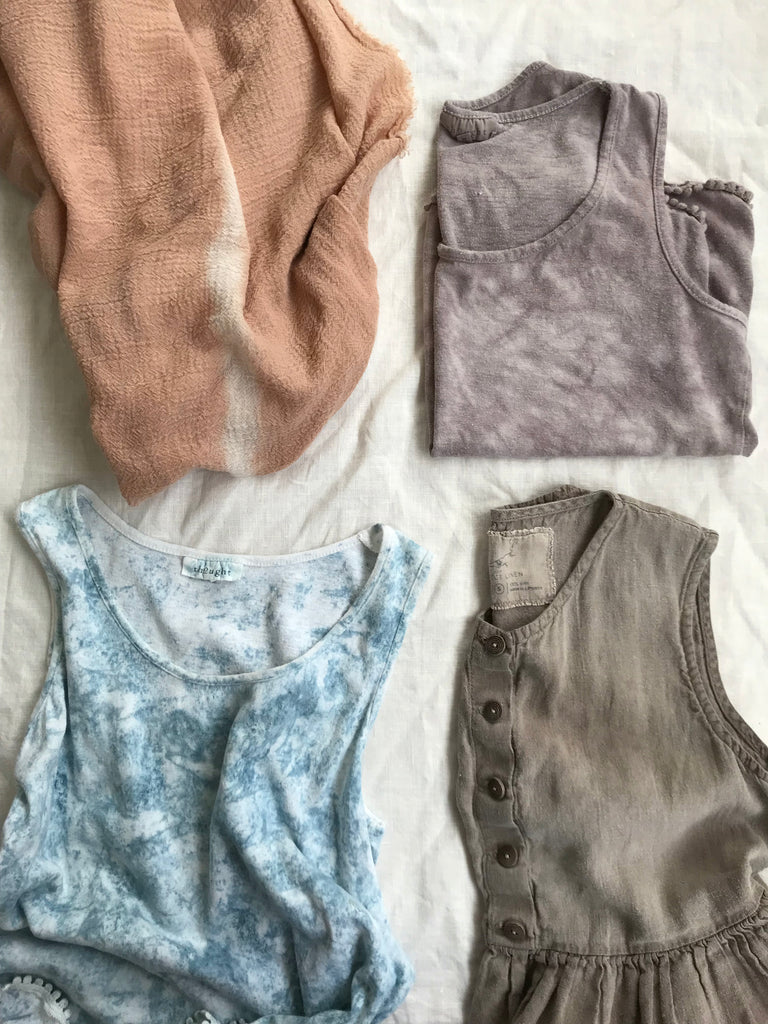
My favourite items of clothing that I wear several times a week:
- Cotton scarf dyed with avocado stones (Greenfibres fabric – 10% discount from Greenfibres. Click here to get the coupon code)
- Organic cotton/hemp vest dyed with avocado stones + iron (grey-purple).
- Same style of vest dyed with Japanese indigo leaves (blue).
- Linen dress dyed with oak leaves and iron.
5. Do you use washing liquid or powder?
I wash everything at 40°C in the washing machine with natural laundry liquid — my favourite brand for the past couple of years has been Greenscents: Greenscents 500ml and Greenscents 5 litre bulk size.
*Amazon affiliate links – I earn a small fee for qualifying purchases.
I’ve always favoured washing liquid over powder, as that’s simply what I’ve always known, but some people may prefer powders. The important thing is that you use something gentle, to preserve your plant colours.
Before I discovered Greenscents in 2020, I always used BioD, which suited my family’s sensitive skin very well. BioD washes naturally dyed fabrics well too.
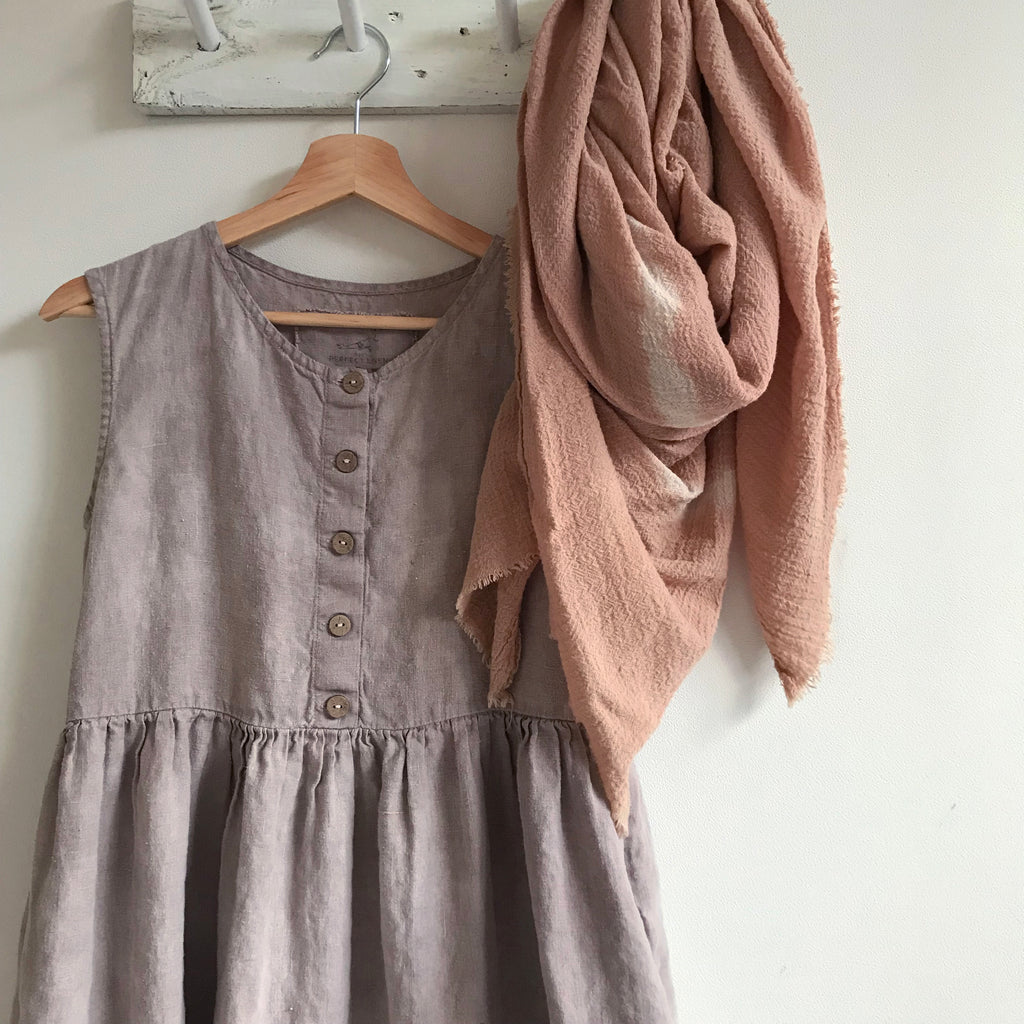
Above: My favourite linen dress and cotton scarf – both dyed with avocado stones. The grey-purple colour is from dipping the dyed fabric into an after-bath of ferrous sulphate to shift the peach-pink colour to grey-purple.
6. Should we use pH neutral washing detergent?
Generally, yes, but sometimes we may want to play around the pH of a dye and control the final colour. Many plant dyes are pH sensitive, so a final rinse in either an acidic or alkaline bucket of water will shift the colour into two directions. You may prefer the colour from either an acidic or alkaline bath, so after washing your clothing, give it a quick rinse in a bucket of water with a squeeze of lemon juice (or a dash of white vinegar), or a sprinkle of baking soda. Don’t add too much acid or alkali as this could damage your fibres.
Also, if you discover that you don’t like a new dye colour after rinsing out freshly dyed fabric, try rinsing it in a bucket of acidic or alkaline water to see if the colour shifts to a slightly different shade that you prefer.
7. How does pH affect natural dyes?
One of the beautiful things about natural dyes is that they are alive. The colours dance in different lighting and appear to mysteriously change shades, and most colours are universally flattering on our skin tones. These are all reasons why I love natural colours. However, they are susceptible to accidental staining from acidic food, such as lemon juice! It can be annoying at times, but all you need to do is wash your clothing in your usual way, and the stain will disappear. Keep reading for a little tip I have for citrus staining.
Citrus juice will temporarily bleach the fabric, so if you’re like me and you often forget to wear an apron in the kitchen (when will I learn?!), then your clothing will end up with bleached spots. It’s particularly noticeable with fabric that’s been darkened with iron, as the citrus acts as a discharge and temporarily bleaches the colour. The effect isn’t as noticeable on colours that haven’t been darkened with iron. Rather than wash my clothing just because I’ve accidentally sprayed myself with citrus, I often just add to the effect and splatter some more across the clothing to add to the pattern. Then the bleached spots look intentional and I can continue wearing the clothing. After all, it’s not dirty, the pH has simply been changed. You can even play around with this effect and paint on stripes or spots whenever you choose!
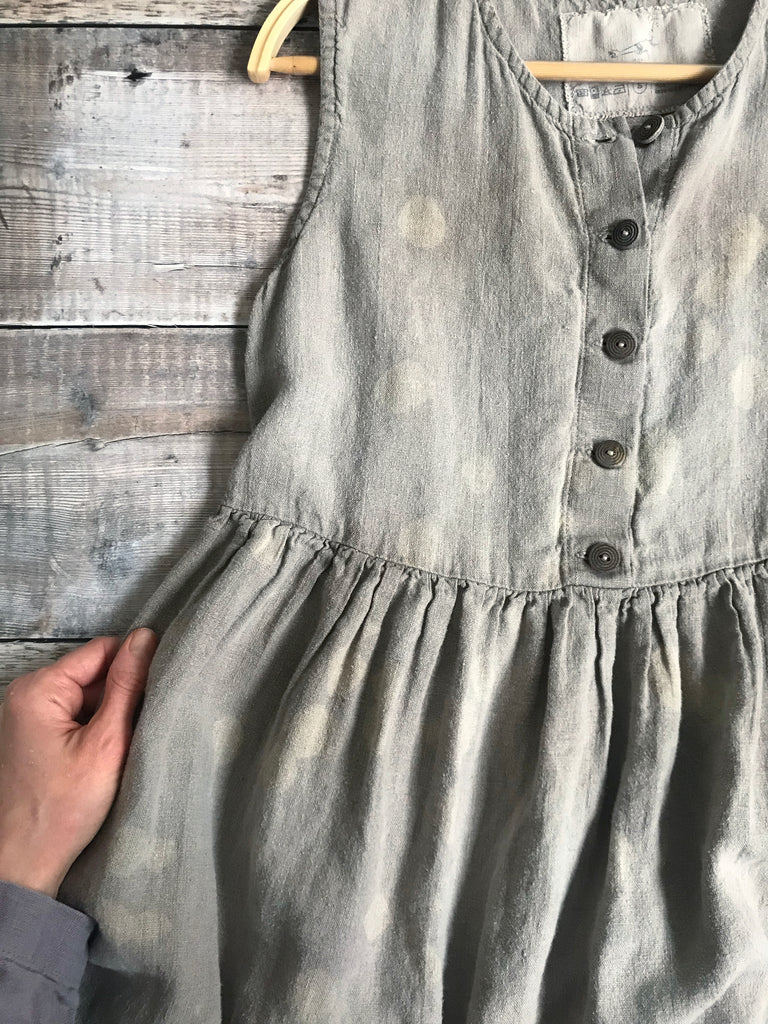
Tip: Pattern making with splashes of lemon juice. Use this simple method to disguise accidental splashes of lemon or lime juice on your clothing. Rather than wash the item because of a small patch, take off your clothing and add to the pattern so it looks more intentional. This grey dress was dyed with oak leaves and iron. Some dyes are more pH sensitive than others, so some dyes will discharge more than others.
8. Why do some of my naturally dyed tops develop different coloured patches under the arms?
This could be from either the pH of your sweat or an ingredient in your deodorant. Some dyes will be more sensitive than others. First of all, you could try a different deodorant to see if that makes a difference.
This happened to me many years ago when I wore a dress that I’d dyed with logwood (back when I used dye extracts). My sweat or deodorant – I’m still not sure which – lightened the underarms. The dress returned to normal in the wash, but it kept happening each time I wore it. It hasn’t happened with any of the dyes I currently use, probably because I don’t use that deodorant anymore. It’s hard to pin point the exact cause in these situations, but try changing deodorant to see if that helps. Our sweat can vary according to what we eat. My diet has varied a lot over the years, so that could definitely be a factor in my case, so you may find that things change over time if your eating habits change. Dyes from plants are most certainly alive!
9. Can you put plant-dyed clothing in the dryer?
Yes, I do! I always use the low heat setting. I don’t think that the heat from the dryer will cause any harm – in fact the heat may even help set the dyes and improve colourfastness. You could try an experiment to see if this is the case for you.
Don’t use a high heat on delicate fabric. Prolonged use of a dryer will eventually weaken fibres over time. There’s always some fluff left in a dryer, and those are the fibres that have been lost from the clothing through the tumbling in the machine. Over time, more and more fibres are lost and your clothing will literally get thinner and thinner.
If you dry your washing outside, always dry it in the shade as sunlight can fade colours.
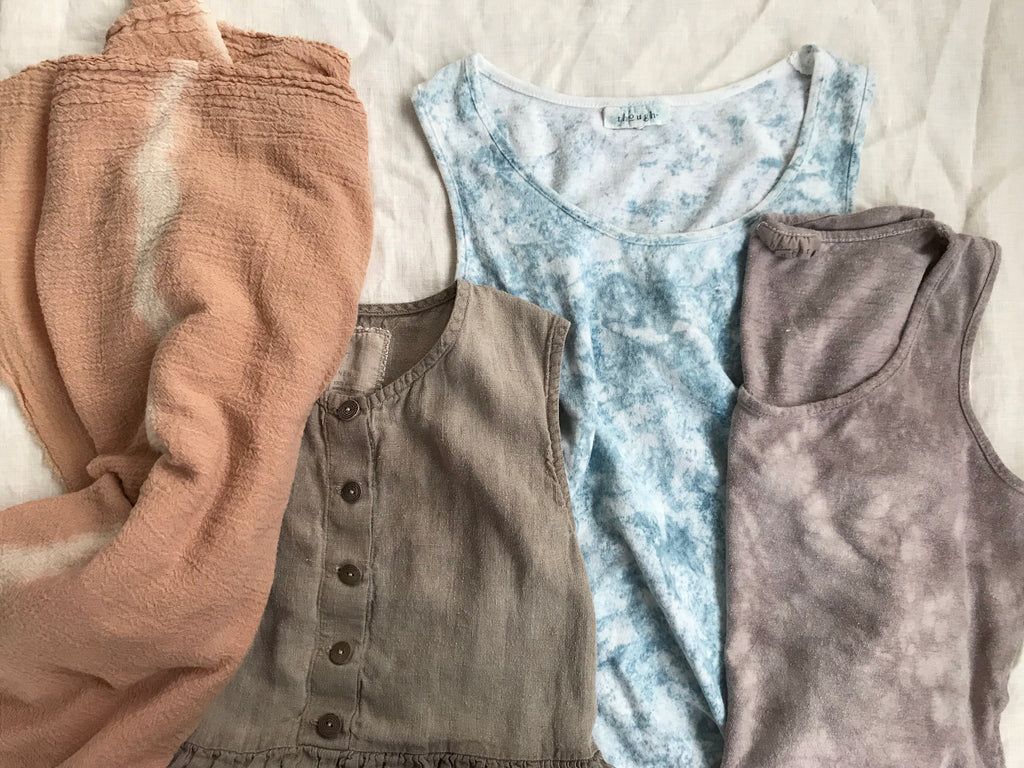
10. What can we do about stains on naturally dyed clothing?
First, try soaking the stained clothing in cool water with some washing liquid added. I’ve made the mistake of washing blood-stained clothing in the washing machine and the heat actually sets the blood! The protein in blood makes it quite an effective dye on clothing which can be problematic. For other stains, see if this initial soaking helps loosen the particles that have caused the mark, then put the clothing in the washing machine. I tend to use a slightly longer cycle for dirty or stained clothing.
If we use any bleaching agents on naturally dyed clothing, then it is likely to wash out the colour of the fabric too. Some stains that are difficult to remove may actually contain tannins, so they are in fact dyes! Tea stains are notoriously hard to remove (without bleach) and that’s because tea is actually a dye. For baby clothing that is stained with food, I’ve managed to remove tough marks with hydrogen peroxide and baking soda. But I wouldn’t recommend this for plant-dyes as everything will get bleached.
When you stain naturally dyed clothing and you don’t feel you can wear it anymore as it is, there’s not much that you can do but camouflage the stain. You could try dyeing it a darker colour, but often a stain will continue to grin through. Adding a new pattern is probably the best way to distract from a stain. Here are a few options:
- Hammer leaves over the clothing to create a simple pattern that covers or distracts from the stain. There’s a beautiful tutorial for plant pounding in Plant Dye Zine.
- Paint a pattern across the fabric with a darker dye. If you’ve already pretreated your fabric in soya milk (or used alum as a mordant) then you won’t need to redo that step. Simply thicken your dye with some kind of gum (I like gum tragacanth, but you can also use guar gum) and paint onto the fabric, then heat set it with an iron. There’s a step by step tutorial for printing and painting fabric in Plant Dye Zine. In the book, I demonstrate with dark grey paint from oak galls, as well as paint from coreopsis flowers. Use the instructions to make paint from any dye plant.
- Using diluted soya or almond milk, paint a simple pattern on the fabric, wait a few days for the milk to cure, then redye the entire garment. The milk painted areas will dye darker. You could make strategic use of spots or dashes to distract from your stain(s). This blog post will take you through the method step by step. Tea is used as an example in that project, but you can try it with any kind of plant dye.
Tip: Try hammering leaves and flowers on stained clothing to strategically cover marks. You could try making a simple pattern with just single leaves dancing across the surface of your clothing.
Print a pattern on stained clothing to give it a new lease of life.
11. How much does plant-dyed clothing fade over the course of a year of regular use?
This is so hard to answer. I want to say, “How long is a piece of string?” but I will answer it as best I can. I have several items of plant-dyed clothing that I’ve shown you through this blog post that have been washed a lot and the colours are still going strong. They were fairly muted colours to begin with and I can’t really see any change in colour. Saying that, if I’d cut out a piece of surplus fabric from one of the seams and then kept it in a cupboard and not washed it, then my clothing is most likely paler, or the tones have shifted slightly. But when colours fade slowly over time, we don’t really notice. As you can see from the photos, the colours are most definitely still there, and I enjoy wearing these pieces every week.
I estimate that my dyed linen dresses have each been washed 25 times and they are both still grey/lilac (from avocado stones and ferrous sulphate) and grey/brown (from oak leaves and ferrous sulphate). My favourite scarf that I dyed with avocado stones is still very much a pinky-peach, and I’ve worn it almost daily through all the seasons in the last year and it’s washed frequently.
So the answer to the original question it that the colours will fade gradually over time, but not enough to take away from the enjoyment of wearing your garments. The type of dyes that you choose, the fabric you use and the way you dye your fabric will all have a big effect on the longevity of your colours.
12. How can we prevent fading?
First of all, make sure you’re using dyes that are long lasting (as outlined at the beginning of this post). My complete dyeing method is in Botanical Colour at your Fingertips and I show you how to pretreat fabric in a bath of soya milk, which certainly helps with colourfastness. It’s important to add that this isn’t the only way to dye fabric. Natural dyeing is one of those crafts that has had many, many (re)interpretations. My book shows you the method that I use to produce long lasting colours. I wear my dyed clothing all the time and I’m very satisfied with the methods and results.
When you have your basics right, then you set the foundation for creating longer lasting colours. Also keep these points in mind:
- Wash as little as possible. Do you really need to wash your clothing after every wear? Try airing clothing outside in the shade to freshen it up.
- Don’t dry in the sunlight – always dry in the shade. Sunlight will rapidly fade some dyes.
- Use a gentle washing detergent.
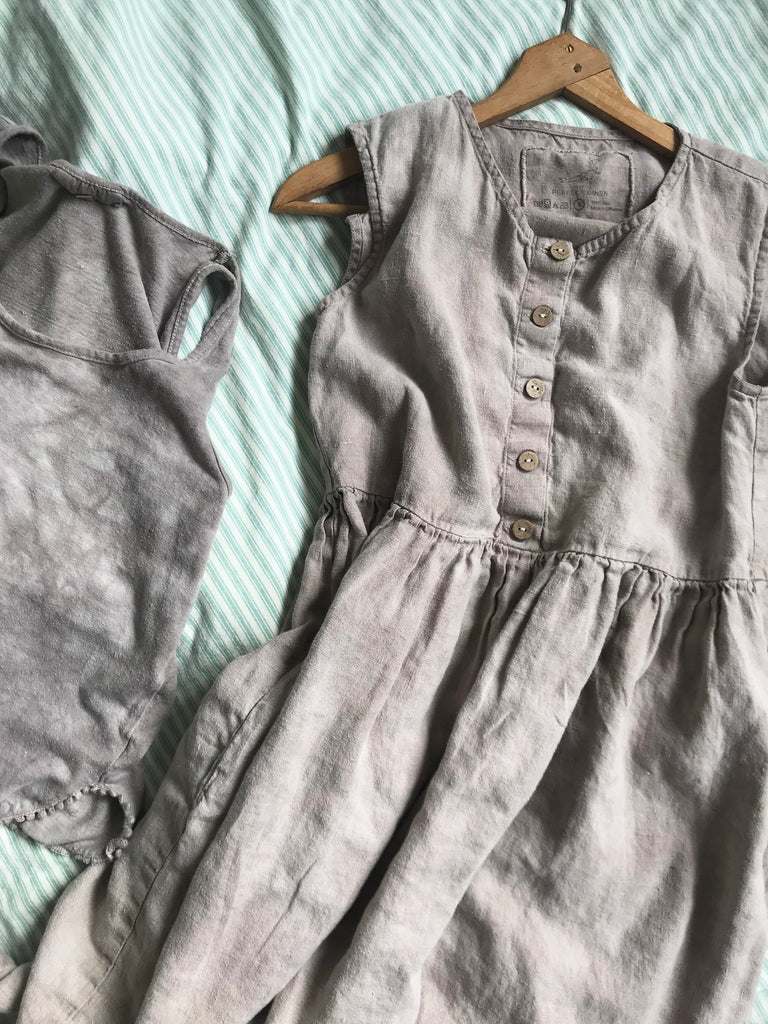
Linen dress and organic cotton/hemp dress both dyed with avocado stones and dipped in iron water to shift the pink to grey-purple.
13. How much does light affect colour?
Sunlight affects some dyes more than others. Interestingly, I’ve noticed that the yellow dye from pomegranate skins darkens in sunlight. I imagine that the tannins react with sunlight and deepen the colour. However, many other dyes will lighten in sunlight. It’s best to carry out a lightfastness test on any new dyes you use to assess how much the colour changes in sunlight. This is especially important if you plan to make and dye items for the home, such as cushion/pillow covers or curtains. After carrying out a series of light and washfastness tests, then you can choose the most appropriate dyes for the use you have in mind (e.g. clothing or home).
Don’t display clothing in the light as this will fade colours more rapidly. The same goes for synthetic dyes: they can bleach in the sun. I once bought a top in a shop that came from the display in the window. I was thrilled to have found the last one in my size, only to get home and discover that the front was much paler than the back!
14. Can you redye clothing?
Yes, of course. If the colour fades then you can redye it. If you’ve pretreated the fabric with soya milk (or mordanted using another method) then you shouldn’t need to redo this step. Just dampen the clothing and add to a new dye pot, then follow your usual dyeing method. Equally, if you grow tired of a shade, then you can layer on a new colour in the same way. Or dip dye half the fabric to add some interest.
15. Does fabric type make a difference to how well the colour lasts?
Yes, I’ve found that unbleached and less processed fabric takes on dye better and colours last longer. For example, unbleached organic cotton and linen develop deeper colours than processed fibres such as bamboo viscose. In terms of longevity of colour, in my experience the purest fibres keep their colour better.
The dresses I wear are linen (I ordered white dresses from Not Perfect Linen on Etsy) and I’ve found that they have held their colour very well over time. In contrast, a few years ago I dyed myself some viscose tops with elastane and those faded more quickly. My scarves are all made from unbleached organic cotton from Greenfibres (this page gives you a coupon code for 10% off all Greenfibres fabric!) and the colours last remarkably well. Of course, the most important thing is that you choose your dyes wisely so they have the best chance of lasting. It’s still fun to play around with more transient colours, but we can’t expect the colours to survive repeated washing.
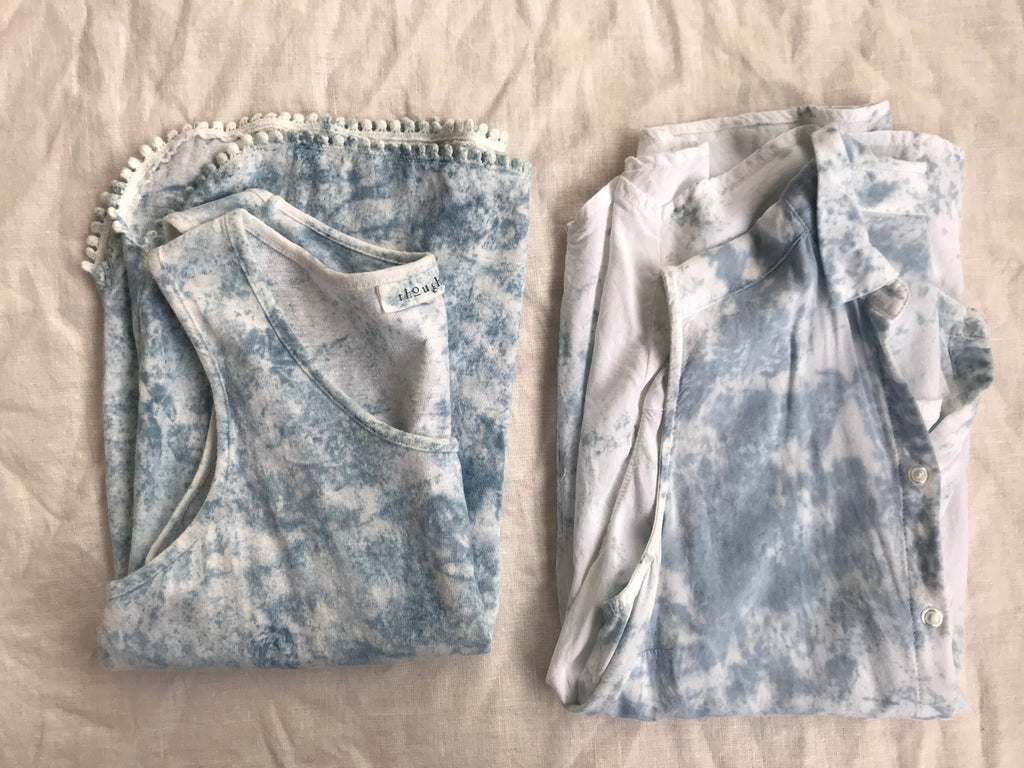
Two tops dyed with Japanese indigo. The one on the left is made from less processed fabric (organic cotton and hemp) and the colour was vivid right from the beginning and the colour has lasted well. The top on the right is made from viscose, which is a processed cellulose fibre, and the colour has always been paler and I feel that it’s faded slightly more.
I hope that some of these answers are helpful to you. Of course these are just my experiences and you may well notice something different happening to your clothing. There are endless factors at play with natural dyeing and it’s a continual journey of discovery. Enjoy!





